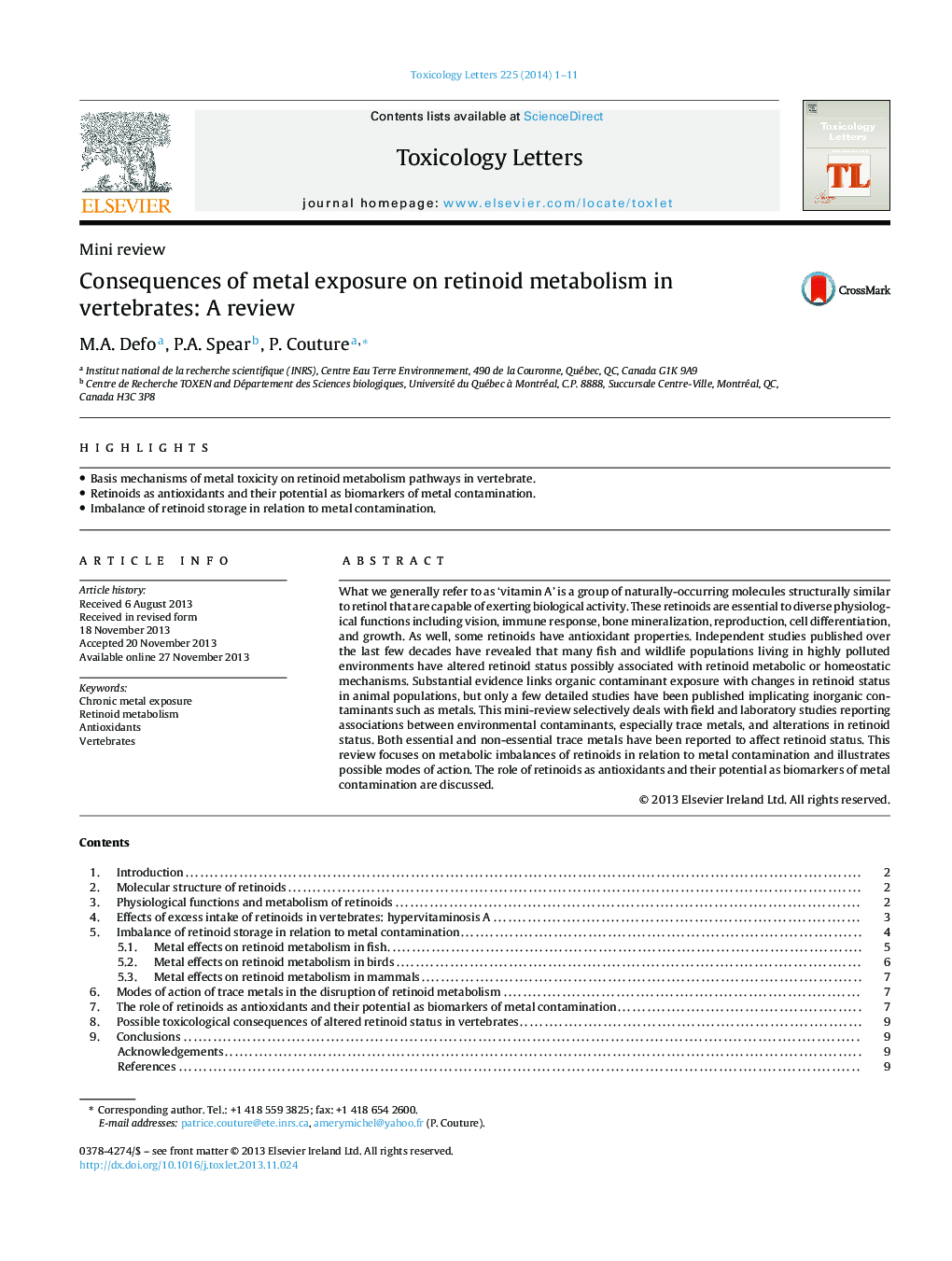| Article ID | Journal | Published Year | Pages | File Type |
|---|---|---|---|---|
| 5860468 | Toxicology Letters | 2014 | 11 Pages |
Abstract
What we generally refer to as 'vitamin A' is a group of naturally-occurring molecules structurally similar to retinol that are capable of exerting biological activity. These retinoids are essential to diverse physiological functions including vision, immune response, bone mineralization, reproduction, cell differentiation, and growth. As well, some retinoids have antioxidant properties. Independent studies published over the last few decades have revealed that many fish and wildlife populations living in highly polluted environments have altered retinoid status possibly associated with retinoid metabolic or homeostatic mechanisms. Substantial evidence links organic contaminant exposure with changes in retinoid status in animal populations, but only a few detailed studies have been published implicating inorganic contaminants such as metals. This mini-review selectively deals with field and laboratory studies reporting associations between environmental contaminants, especially trace metals, and alterations in retinoid status. Both essential and non-essential trace metals have been reported to affect retinoid status. This review focuses on metabolic imbalances of retinoids in relation to metal contamination and illustrates possible modes of action. The role of retinoids as antioxidants and their potential as biomarkers of metal contamination are discussed.
Related Topics
Life Sciences
Environmental Science
Health, Toxicology and Mutagenesis
Authors
M.A. Defo, P.A. Spear, P. Couture,
